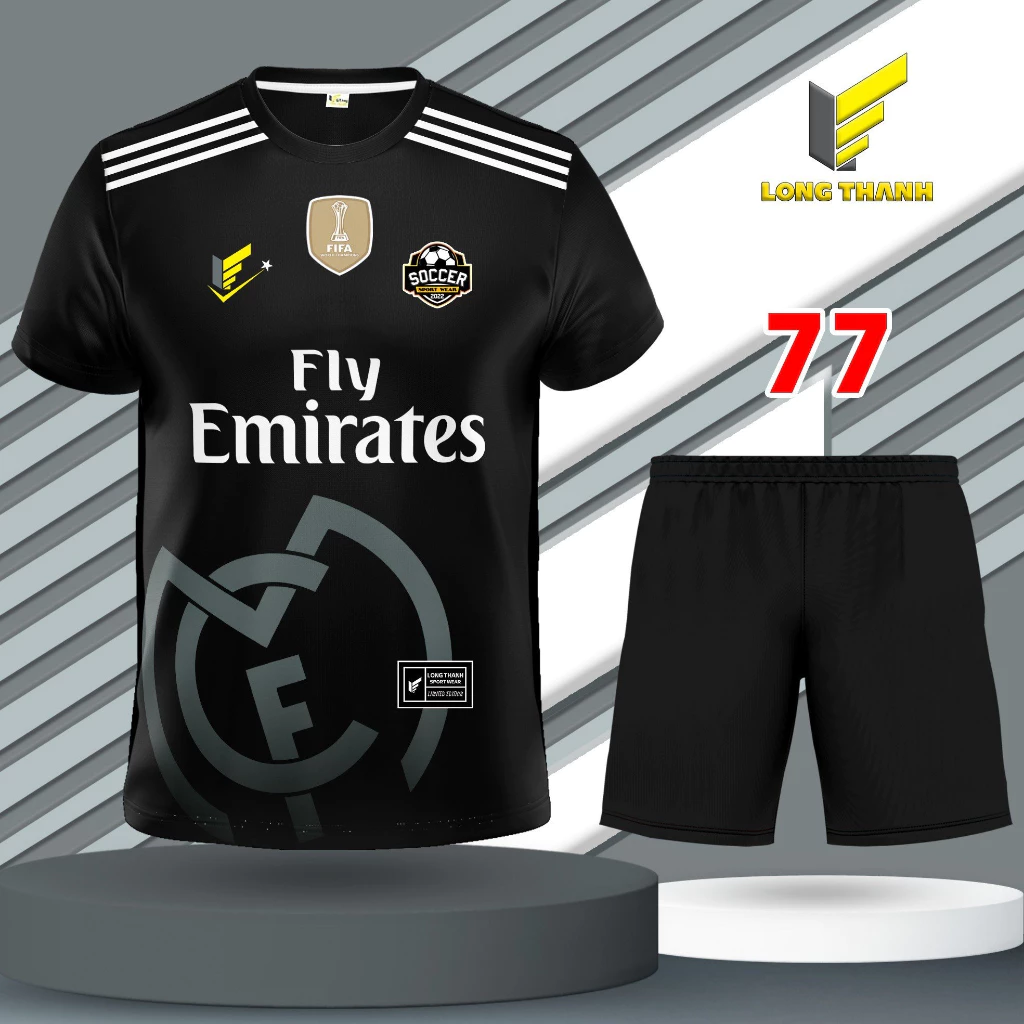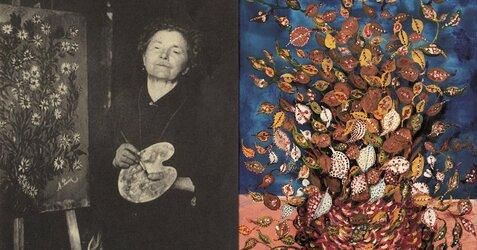Cyproterone acetate
 | |
 | |
| Dữ liệu lâm sàng | |
|---|---|
| Tên thương mại | Androcur, Androcur Depot, Cyprostat, Siterone, others |
| Đồng nghĩa | SH-80714; SH-714; NSC-81430; 1α,2α-Methylene-6-chloro-17α-hydroxy-δ6-progesterone acetate; 1α,2α-Methylene-6-chloro-17α-hydroxypregna-4,6-diene-3,20-dione acetate |
| AHFS/Drugs.com | Thông tin tiêu dùng chi tiết Micromedex |
| Danh mục cho thai kỳ |
|
| Dược đồ sử dụng | By mouth, intramuscular injection |
| Mã ATC | |
| Tình trạng pháp lý | |
| Tình trạng pháp lý |
|
| Dữ liệu dược động học | |
| Sinh khả dụng | Oral: 88–100%[3][4] |
| Liên kết protein huyết tương | Albumin: 93% Free: 7%[5][6][7][8] |
| Chuyển hóa dược phẩm | Gan (CYP3A4)[1][2] |
| Chất chuyển hóa | • 15β-OH-CPA (major)[3][9] • Cyproterone (minor)[10] • Acetic acid (minor)[10] |
| Chu kỳ bán rã sinh học | Oral: 1.6–4.3 days[10][11][12] IM: 3–4.3 days[4][10][12] |
| Bài tiết | Feces: 70%[10] Urine: 30%[10] |
| Các định danh | |
Tên IUPAC
| |
| Số đăng ký CAS |
|
| PubChem CID | |
| IUPHAR/BPS | |
| DrugBank | |
| ChemSpider | |
| Định danh thành phần duy nhất | |
| KEGG | |
| ChEBI | |
| ChEMBL | |
| ECHA InfoCard | 100.006.409 |
| Dữ liệu hóa lý | |
| Công thức hóa học | C24H29ClO4 |
| Khối lượng phân tử | 416.942 g/mol |
| Mẫu 3D (Jmol) | |
| Điểm nóng chảy | 200 đến 201 °C (392 đến 394 °F) |
SMILES
| |
Định danh hóa học quốc tế
| |
| (kiểm chứng) | |
Codoterone acetate (CPA), được bán một mình dưới tên thương hiệu Androcur hoặc với ethinylestradiol dưới tên thương hiệu Diane hoặc Diane-35 trong số những loại khác, là một loại thuốc chống ung thư và proestin được sử dụng trong điều trị các tình trạng phụ thuộc androgen như mụn trứng cá, tóc quá mức tăng trưởng, dậy thì sớm và ung thư tuyến tiền liệt, là một thành phần của liệu pháp hormone nữ tính cho phụ nữ chuyển giới và trong thuốc tránh thai.[3][11][13][14][15] Nó được điều chế và sử dụng cả một mình và kết hợp với estrogen và có sẵn để sử dụng cả bằng miệng và tiêm vào cơ bắp. CPA được thực hiện bằng miệng một đến ba lần mỗi ngày hoặc tiêm bằng cách tiêm một hoặc hai lần mỗi tuần.
Tác dụng phụ thường gặp của CPA liều cao ở nam giới bao gồm gynecomastia (phát triển vú) và nữ tính hóa. Ở cả nam và nữ, các tác dụng phụ có thể xảy ra của CPA bao gồm nồng độ hormone giới tính thấp, vô sinh có thể đảo ngược, rối loạn chức năng tình dục, mệt mỏi, trầm cảm, tăng cân và men gan cao. Ở liều rất cao ở người lớn tuổi, các biến chứng tim mạch đáng kể có thể xảy ra. Các phản ứng bất lợi nghiêm trọng nhưng hiếm gặp của CPA bao gồm cục máu đông, tổn thương gan và một số loại u não lành tính. CPA cũng có thể gây ra suy thượng thận do tác dụng cai thuốc nếu ngừng thuốc đột ngột với liều cao. CPA ngăn chặn tác động của androgen như testosterone trong cơ thể, điều này giúp ngăn chặn chúng tương tác với mục tiêu sinh học của chúng, thụ thể androgen (AR) và bằng cách giảm sản xuất bởi các tuyến sinh dục và do đó nồng độ của chúng trong cơ thể.[3][13][16] Ngoài ra, nó có tác dụng giống progesterone bằng cách kích hoạt thụ thể progesterone (PR).[3][13] Nó cũng có thể tạo ra các hiệu ứng giống như cortisol yếu ở liều rất cao.[3]
CPA được phát hiện vào năm 1961.[17] Ban đầu nó được phát triển dưới dạng proestin.[17] Năm 1965, các hiệu ứng chống oxy hóa của CPA đã được phát hiện.[18] CPA lần đầu tiên được bán trên thị trường, dưới dạng antiandrogen, vào năm 1973, và là loại antiandrogen đầu tiên được giới thiệu cho mục đích y tế.[19] Vài năm sau, vào năm 1978, CPA được giới thiệu là một proestin trong thuốc tránh thai.[20] Nó đã được mô tả như là một proestin "thế hệ đầu tiên".[21] CPA có sẵn rộng rãi trên toàn thế giới.[22][23] Một ngoại lệ là Hoa Kỳ, nơi nó không được chấp thuận sử dụng.[24] CPA đã được mô tả là antiandrogen nguyên mẫu.[25]
Chống chỉ định
[sửa | sửa mã nguồn]Chống chỉ định của CPA bao gồm:[26][27][28]
- Quá mẫn cảm với CPA hoặc bất kỳ thành phần nào khác của thuốc
- Mang thai, cho con bú và cho con bú
- Tuổi dậy thì (trừ khi được sử dụng để điều trị dậy thì sớm hoặc dậy thì muộn)
- Bệnh gan và rối loạn chức năng gan
- Suy thận
- Hội chứng Dubin-Johnson và hội chứng cánh quạt
- Tiền sử vàng da hoặc ngứa kéo dài khi mang thai
- Lịch sử mụn rộp khi mang thai
- Các khối u gan trước đó hoặc hiện tại (chỉ khi không phải do di căn từ ung thư tuyến tiền liệt)
- U màng não trước hoặc hiện có, tăng prolactin máu hoặc prolactinoma
- Hội chứng đào thải (trừ ung thư tuyến tiền liệt không thể phẫu thuật)
- Trầm cảm nặng
- Các quá trình huyết khối trước đó hoặc hiện tại, cũng như đột quỵ và nhồi máu cơ tim
- Bệnh tiểu đường nặng với những thay đổi mạch máu
- Thiếu máu hồng cầu hình liềm
Khi CPA được sử dụng kết hợp với estrogen, chống chỉ định dùng thuốc tránh thai cũng cần được xem xét.[28]
Quá liều
[sửa | sửa mã nguồn]CPA tương đối an toàn khi dùng quá liều cấp tính.[27] Nó được sử dụng với liều rất cao lên tới 300 mg/ngày bằng miệng và 700 mg mỗi tuần bằng cách tiêm bắp.[27][29] Để so sánh, liều CPA được sử dụng trong thuốc tránh thai là 2 mg / ngày.[30] Không có trường hợp tử vong liên quan đến quá liều CPA.[27] Không có thuốc giải độc đặc hiệu cho quá liều CPA, và điều trị nên dựa trên triệu chứng.[27] Rửa dạ dày có thể được sử dụng trong trường hợp quá liều uống trong vòng 2 đến 3 vừa qua giờ [27]
Tương tác
[sửa | sửa mã nguồn]Các chất ức chế và gây cảm ứng của cytochrome P450 enzym CYP3A4 có thể tương tác với CPA.[27] Ví dụ về các chất ức chế CYP3A4 mạnh mẽ bao gồm ketoconazole, itraconazole, clotrimazole, và ritonavir, trong khi ví dụ về các thuốc gây cảm ứng CYP3A4 mạnh mẽ bao gồm rifampicin, rifampin, phenytoin, carbamazepine, phenobarbital, và St. John's wort.[27] Một số loại thuốc chống co giật có thể làm giảm đáng kể mức CPA, tới 8 lần.[31]
Hóa học
[sửa | sửa mã nguồn]CPA, còn được gọi là 1α, 2α-methylene-6-chloro-17α-acetoxy- 6-progesterone hoặc 1α, 2α-methylene-6-chloro-17α-hydroxypregna-4,6-diene-3,20-dione acetate, là một steroid tổng hợp mang thai và là một dẫn xuất acetylated của 17α-hydroxyprogesterone.[32][33] Nó có cấu trúc liên quan đến các dẫn xuất 17α-hydroxyprogesterone khác như chlormadinone acetate, hydroxyprogesterone caproate, medroxyprogesterone acetate và megestrol acetate.[33]
Tổng hợp
[sửa | sửa mã nguồn]Tổng hợp hóa học của CPA đã được công bố.[34][35][36] Sau đây là một tổng hợp như vậy:[37][38]

Lịch sử
[sửa | sửa mã nguồn]CPA được tổng hợp lần đầu tiên vào năm 1961 bởi Rudolf Wiechert, một nhân viên của Schering và cùng với Friedmund Neumann ở Berlin, họ đã nộp đơn xin cấp bằng sáng chế cho CPA với tư cách là "đại lý tiên tri" vào năm 1962.[17][39] Hoạt động chống oxy hóa của CPA được Hamada, Neumann và Karl Junkmann phát hiện vào năm 1963.[40][41] Cùng với sự antiandrogens steroid benorterone (17α-methyl- B -nortestosterone; SKF-7690), cyproterone, BOMT (Ro 7-2340), và trimethyltrienolone (R-2956) và antiandrogens không steroid flutamide và DIMP (Ro 7-8117), CPA là một trong những thuốc chống ung thư đầu tiên được phát hiện và nghiên cứu.[42][43][44][45]
Xem thêm
[sửa | sửa mã nguồn]- Estradiol valerate/cyproterone acetate
- Ethinylestradiol/cyproterone acetate
Tham khảo
[sửa | sửa mã nguồn]- ^ Dickman A (ngày 27 tháng 9 năm 2012). Drugs in Palliative Care. OUP Oxford. tr. 137–138. ISBN 978-0-19-966039-1.
- ^ Boarder M, Newby D, Navti P (ngày 25 tháng 3 năm 2010). Pharmacology for Pharmacy and the Health Sciences: A Patient-centred Approach. OUP Oxford. tr. 632–. ISBN 978-0-19-955982-4.
- ^ a b c d e f Kuhl H (2005). “Pharmacology of estrogens and progestogens: influence of different routes of administration”. Climacteric. 8 Suppl 1: 3–63. doi:10.1080/13697130500148875. PMID 16112947.
- ^ a b Huber J, Zeillinger R, Schmidt J, Täuber U, Kuhnz W, Spona J (tháng 11 năm 1988). “Pharmacokinetics of cyproterone acetate and its main metabolite 15 beta-hydroxy-cyproterone acetate in young healthy women”. Int J Clin Pharmacol Ther Toxicol. 26 (11): 555–61. PMID 2977383.
- ^ Bińkowska M, Woroń J (tháng 6 năm 2015). “Progestogens in menopausal hormone therapy”. Przegla̜d Menopauzalny = Menopause Review. 14 (2): 134–43. doi:10.5114/pm.2015.52154. PMC 4498031. PMID 26327902.
- ^ Schindler AE, Campagnoli C, Druckmann R, Huber J, Pasqualini JR, Schweppe KW, Thijssen JH (tháng 12 năm 2003). “Classification and pharmacology of progestins” (PDF). Maturitas. 46 Suppl 1: S7–S16. doi:10.1016/j.maturitas.2003.09.014. PMID 14670641.
Since there is no binding of CPA to SHBG and CBG in the serum, 93% of the compound is bound to serum albumin.
[liên kết hỏng] - ^ Wakelin SH, Maibach HI, Archer CB (ngày 1 tháng 6 năm 2002). Systemic Drug Treatment in Dermatology: A Handbook. CRC Press. tr. 32–. ISBN 978-1-84076-013-2.
It is almost exclusively bound to plasma albumin.
- ^ Hammond GL, Lähteenmäki PL, Lähteenmäki P, Luukkainen T (tháng 10 năm 1982). “Distribution and percentages of non-protein bound contraceptive steroids in human serum”. Journal of Steroid Biochemistry. 17 (4): 375–80. doi:10.1016/0022-4731(82)90629-X. PMID 6215538.
- ^ Frith RG, Phillipou G (1985). “15-Hydroxycyproterone acetate and cyproterone acetate levels in plasma and urine”. J. Chromatogr. 338 (1): 179–86. doi:10.1016/0378-4347(85)80082-7. PMID 3160716.
- ^ a b c d e f Georg F. Weber (ngày 22 tháng 7 năm 2015). Molecular Therapies of Cancer. Springer. tr. 316–. ISBN 978-3-319-13278-5.
The terminal half-life is about 38 h. A portion of the drug is metabolized by hydrolysis to cyproterone and acetic acid. However, in contrast to many other steroid esters hydrolysis is not extensive, and much of the pharmacological activity is exerted by the acetate form. Excretion is about 70% in the feces, mainly in the form of glucuronidated metabolites, and about 30% in the urine, predominantly as non-conjugated metabolites.
- ^ a b Barradell LB, Faulds D (tháng 7 năm 1994). “Cyproterone. A review of its pharmacology and therapeutic efficacy in prostate cancer”. Drugs Aging. 5 (1): 59–80. doi:10.2165/00002512-199405010-00006. PMID 7919640.
- ^ a b AAPL Newsletter (PDF). The Academy. 1998.
CPA is 100% bioavailable when taken orally with a half life of 38 hours. The injectable form reaches maximum plasma levels in 82 hours and has a half life of about 72 hours.
- ^ a b c Neumann F (1994). “The antiandrogen cyproterone acetate: discovery, chemistry, basic pharmacology, clinical use and tool in basic research”. Exp. Clin. Endocrinol. 102 (1): 1–32. doi:10.1055/s-0029-1211261. PMID 8005205.
- ^ Neumann F (tháng 1 năm 1977). “Pharmacology and potential use of cyproterone acetate”. Horm. Metab. Res. 9 (1): 1–13. doi:10.1055/s-0028-1093574. PMID 66176.
- ^ Neumann F, Töpert M (tháng 11 năm 1986). “Pharmacology of antiandrogens”. Journal of Steroid Biochemistry. 25 (5B): 885–95. doi:10.1016/0022-4731(86)90320-1. PMID 2949114.
- ^ Jonathan S. Berek (2007). Berek & Novak's Gynecology. Lippincott Williams & Wilkins. tr. 1085. ISBN 978-0-7817-6805-4.
- ^ a b c Pucci E, Petraglia F (tháng 12 năm 1997). “Treatment of androgen excess in females: yesterday, today and tomorrow”. Gynecol. Endocrinol. 11 (6): 411–33. doi:10.3109/09513599709152569. PMID 9476091.
- ^ Neumann F, Elger W (1966). “Permanent changes in gonadal function and sexual behaviour as a result of early feminization of male rats by treatment with an antiandrogenic steroid”. Endokrinologie. 50: 209–225.
- ^ Sarah H. Wakelin (ngày 1 tháng 6 năm 2002). Systemic Drug Treatment in Dermatology: A Handbook. CRC Press. tr. 32. ISBN 978-1-84076-013-2.
- ^ G. Plewig; A.M. Kligman (ngày 6 tháng 12 năm 2012). ACNE and ROSACEA. Springer Science & Business Media. tr. 662, 685. ISBN 978-3-642-59715-2.
- ^ Louw-du Toit R, Storbeck KH, Cartwright M, Cabral A, Africander D (tháng 2 năm 2017). “Progestins used in endocrine therapy and the implications for the biosynthesis and metabolism of endogenous steroid hormones”. Mol. Cell. Endocrinol. 441: 31–45. doi:10.1016/j.mce.2016.09.004. PMID 27616670.
- ^ “Cyproterone”.
- ^ Index Nominum 2000: International Drug Directory. Taylor & Francis. tháng 1 năm 2000. tr. 289–. ISBN 978-3-88763-075-1.
- ^ Loren S Schechter (ngày 22 tháng 9 năm 2016). Surgical Management of the Transgender Patient. Elsevier Health Sciences. tr. 26–. ISBN 978-0-323-48408-4.
- ^ J. Larry Jameson; Leslie J. De Groot (ngày 25 tháng 2 năm 2015). Endocrinology: Adult and Pediatric E-Book. Elsevier Health Sciences. tr. 2293, 2464, 2479, 6225. ISBN 978-0-323-32195-2.
- ^ “Androcur Label” (PDF).
- ^ a b c d e f g h “Mylan-Cyproterone Label” (PDF).
- ^ a b Hammerstein, J. (1990). “Antiandrogens: Clinical Aspects”. Hair and Hair Diseases. tr. 827–886. doi:10.1007/978-3-642-74612-3_35. ISBN 978-3-642-74614-7.
- ^ Fabian M. Saleh; Albert J. Grudzinskas; John M. Bradford (ngày 11 tháng 2 năm 2009). Sex Offenders: Identification, Risk Assessment, Treatment, and Legal Issues. Oxford University Press, USA. tr. 197–. ISBN 978-0-19-517704-6.
- ^ Marc A. Fritz; Leon Speroff (2011). Clinical Gynecologic Endocrinology and Infertility. Lippincott Williams & Wilkins. tr. 1091–. ISBN 978-0-7817-7968-5.
- ^ Miller JA, Jacobs HS (tháng 5 năm 1986). “Treatment of hirsutism and acne with cyproterone acetate”. Clin Endocrinol Metab. 15 (2): 373–89. doi:10.1016/S0300-595X(86)80031-7. PMID 2941191.
- ^ Gräf, K.-J.; Brotherton, J.; Neumann, F. (1974). Androgens II and Antiandrogens / Androgene II und Antiandrogene. tr. 485–542. doi:10.1007/978-3-642-80859-3_7. ISBN 978-3-642-80861-6.
- ^ a b John V. Knaus; John H. Isaacs (ngày 6 tháng 12 năm 2012). Office Gynecology: Advanced Management Concepts. Springer Science & Business Media. tr. 150–. ISBN 978-1-4612-4340-3.
- ^ Jürgen Engel; Axel Kleemann; Bernhard Kutscher; Dietmar Reichert (ngày 14 tháng 5 năm 2014). Pharmaceutical Substances, 5th Edition, 2009: Syntheses, Patents and Applications of the most relevant APIs. Thieme. tr. 351–352. ISBN 978-3-13-179275-4.
- ^ William Andrew Publishing (ngày 22 tháng 10 năm 2013). Pharmaceutical Manufacturing Encyclopedia. Elsevier. tr. 1182–1183. ISBN 978-0-8155-1856-3.
- ^ Duang Buddhasukh, Roland Maier, Aranya Manosroi, Jiradej Manosroi, Pattana Sripalakit, Rolf Werner (ngày 29 tháng 4 năm 2002). “EP1359154A1 Further syntheses of cyproterone acetate”. Google Patents.Quản lý CS1: sử dụng tham số tác giả (liên kết)
- ^ a b “Verfahren zur Herstellung von 1, 2alpha-Methylen-delta-17alpha-hydroxy-progesteronen”.
- ^ a b “6-chloro-1, 2alpha-methylene-delta6-17alpha-hydroxyprogesterone compounds and compositions”.
- ^ Bằng sáng chế Hoa Kỳ số 3.234.093
- ^ Hamada, H; Neumann, F; Junkmann, K (tháng 11 năm 1963). “Intrauterine Antimaskuline Beeinflussung von Rattenfeten Durch ein Stark Gestagen Wirksames Steroid” [Intrauterine antimasculine influence of Rat Fetuses by Birtue of a Powerful Steroid Acting as a Progestogen]. Acta Endocrinologica (bằng tiếng Đức). 44 (3): 380–388. doi:10.1530/acta.0.0440380. ISSN 0804-4643. PMID 14071315.
- ^ Neumann, Friedmund (1996). “Pharmacology of Cyproterone Acetate — A Short Review”. Antiandrogens in Prostate Cancer. tr. 31–44. doi:10.1007/978-3-642-45745-6_3. ISBN 978-3-642-45747-0.
- ^ Diamanti-Kandarakis E (tháng 9 năm 1999). “Current aspects of antiandrogen therapy in women”. Curr. Pharm. Des. 5 (9): 707–23. PMID 10495361.
- ^ T. Mann; C. Lutwak-Mann (ngày 6 tháng 12 năm 2012). Male Reproductive Function and Semen: Themes and Trends in Physiology, Biochemistry and Investigative Andrology. Springer Science & Business Media. tr. 352–. ISBN 978-1-4471-1300-3.
- ^ Anthony W. Norman; Gerald Litwack (ngày 28 tháng 6 năm 2014). Hormones. Elsevier Science. tr. 508–. ISBN 978-1-4832-5810-2.
- ^ W.I.P. Mainwaring (ngày 6 tháng 12 năm 2012). The Mechanism of Action of Androgens. Springer Science & Business Media. tr. 53–. ISBN 978-3-642-88429-0.
Đọc thêm
[sửa | sửa mã nguồn]- Neumann F (1971). “Use of cyproterone acetate in animal and clinical trials”. Gynecol Invest. 2 (1): 150–79. doi:10.1159/000301860. PMID 4949823.
- Neumann, F.; Steinbeck, H. (1974). Androgens II and Antiandrogens / Androgene II und Antiandrogene. tr. 235–484. doi:10.1007/978-3-642-80859-3_6. ISBN 978-3-642-80861-6.
- Gräf, K.-J.; Brotherton, J.; Neumann, F. (1974). Androgens II and Antiandrogens / Androgene II und Antiandrogene. tr. 485–542. doi:10.1007/978-3-642-80859-3_7. ISBN 978-3-642-80861-6.
- Horn, H. J. (1974). “Administration of Antiandrogens in Hypersexuality and Sexual Deviations”. Androgens II and Antiandrogens / Androgene II und Antiandrogene. tr. 543–562. doi:10.1007/978-3-642-80859-3_8. ISBN 978-3-642-80861-6.
- Hammerstein J, Meckies J, Leo-Rossberg I, Moltz L, Zielske F (tháng 6 năm 1975). “Use of cyproterone acetate (CPA) in the treatment of acne, hirsutism and virilism”. J. Steroid Biochem. 6 (6): 827–36. doi:10.1016/0022-4731(75)90311-8. PMID 126335.
- Neumann F (tháng 1 năm 1977). “Pharmacology and potential use of cyproterone acetate”. Horm. Metab. Res. 9 (1): 1–13. doi:10.1055/s-0028-1093574. PMID 66176.
- Neumann F (tháng 7 năm 1983). Pharmacological basis for clinical use of antiandrogens. J. Steroid Biochem. 19. tr. 391–402. doi:10.1016/B978-0-08-030771-8.50055-3. ISBN 9780080307718. PMID 6224971.
- Hammerstein J, Moltz L, Schwartz U (tháng 7 năm 1983). “Antiandrogens in the treatment of acne and hirsutism”. J. Steroid Biochem. 19 (1B): 591–7. doi:10.1016/0022-4731(83)90223-6. PMID 6224974.
- Miller JA, Jacobs HS (tháng 5 năm 1986). “Treatment of hirsutism and acne with cyproterone acetate”. Clin Endocrinol Metab. 15 (2): 373–89. doi:10.1016/S0300-595X(86)80031-7. PMID 2941191.
- Neumann F, Wiechert R (tháng 3 năm 1988). “Das Antiandrogen Cyproteronacetat: Seine Geschichte von der Entdeckung bis zur Marktreife” [The Antiandrogen Cyproterone Acetate: Its History from Discovery to Marketing]. Pharm Unserer Zeit (bằng tiếng Đức). 17 (2): 33–50. doi:10.1002/pauz.19880170202. PMID 2967500.
- Tunn UW (1989). “Cyproterone acetate in the management of prostatic cancer”. Prog. Clin. Biol. Res. 303: 105–10. PMID 2528734.
- Hammerstein, J. (1990). “Antiandrogens: Clinical Aspects”. Hair and Hair Diseases. tr. 827–886. doi:10.1007/978-3-642-74612-3_35. ISBN 978-3-642-74614-7.
- Mowszowicz I (tháng 1 năm 1989). “Les antiandrogènes. Mécanismes et effets paradoxaux” [Antiandrogens. Mechanisms and paradoxical effects]. Annales d'Endocrinologie (Paris) (bằng tiếng Pháp). 50 (3): 189–99. ISSN 0003-4266. PMID 2530930.
- Schindler AE (tháng 10 năm 1990). “[Anti-androgen therapy in the female]”. Geburtshilfe Frauenheilkd (bằng tiếng Đức). 50 (10): 749–53. doi:10.1055/s-2008-1026359. PMID 1704865.
- de Voogt HJ (1990). “Cyproterone acetate as monotherapy in prospective randomized trials”. Prog. Clin. Biol. Res. 359: 85–91, discussion 105–7. PMID 2149459.
- Namer M (tháng 10 năm 1988). “Clinical applications of antiandrogens”. J. Steroid Biochem. 31 (4B): 719–29. doi:10.1016/0022-4731(88)90023-4. PMID 2462132.
- Goldenberg SL, Bruchovsky N (1991). “Use of cyproterone acetate in prostate cancer”. Urol. Clin. North Am. 18 (1): 111–22. PMID 1825143.
- Neumann F, Kalmus J (1991). “Cyproterone acetate in the treatment of sexual disorders: pharmacological base and clinical experience”. Exp. Clin. Endocrinol. 98 (2): 71–80. doi:10.1055/s-0029-1211103. PMID 1838080.
- de Voogt HJ (1992). “The position of cyproterone acetate (CPA), a steroidal anti-androgen, in the treatment of prostate cancer”. Prostate Suppl. 4: 91–5. PMID 1533452.
- Schröder FH (1993). “Cyproterone acetate--mechanism of action and clinical effectiveness in prostate cancer treatment”. Cancer. 72 (12 Suppl): 3810–5. doi:10.1002/1097-0142(19931215)72:12+<3810::aid-cncr2820721710>3.0.co;2-o. PMID 8252496.
- Barradell LB, Faulds D (1994). “Cyproterone. A review of its pharmacology and therapeutic efficacy in prostate cancer”. Drugs Aging. 5 (1): 59–80. doi:10.2165/00002512-199405010-00006. PMID 7919640.
- Neumann F (1994). “The antiandrogen cyproterone acetate: discovery, chemistry, basic pharmacology, clinical use and tool in basic research” (PDF). Exp. Clin. Endocrinol. 102 (1): 1–32. doi:10.1055/s-0029-1211261. PMID 8005205.
- Mahler C, Verhelst J, Denis L (tháng 5 năm 1998). “Clinical pharmacokinetics of the antiandrogens and their efficacy in prostate cancer”. Clin Pharmacokinet. 34 (5): 405–17. doi:10.2165/00003088-199834050-00005. PMID 9592622.
- Schröder FH (1998). “Antiandrogens as monotherapy for prostate cancer”. European Urology. 34 Suppl 3: 12–7. doi:10.1159/000052291. PMID 9854190.
- Diamanti-Kandarakis E (tháng 10 năm 1998). “How actual is the treatment with antiandrogen alone in patients with polycystic ovary syndrome?”. J. Endocrinol. Invest. 21 (9): 623–9. doi:10.1007/BF03350788. PMID 9856417.
- Diamanti-Kandarakis E (tháng 9 năm 1999). “Current aspects of antiandrogen therapy in women”. Curr. Pharm. Des. 5 (9): 707–23. PMID 10495361.
- Migliari R, Muscas G, Murru M, Verdacchi T, De Benedetto G, De Angelis M (tháng 12 năm 1999). “Antiandrogens: a summary review of pharmacodynamic properties and tolerability in prostate cancer therapy”. Arch Ital Urol Androl. 71 (5): 293–302. PMID 10673793.
- Laron Z, Kauli R (2000). “Experience with cyproterone acetate in the treatment of precocious puberty”. J. Pediatr. Endocrinol. Metab. 13 Suppl 1: 805–10. doi:10.1515/jpem.2000.13.s1.805. PMID 10969925.
- Reilly DR, Delva NJ, Hudson RW (tháng 8 năm 2000). “Protocols for the use of cyproterone, medroxyprogesterone, and leuprolide in the treatment of paraphilia”. Can J Psychiatry. 45 (6): 559–63. doi:10.1177/070674370004500608. PMID 10986575.
- Anderson J (tháng 3 năm 2003). “The role of antiandrogen monotherapy in the treatment of prostate cancer”. BJU Int. 91 (5): 455–61. doi:10.1046/j.1464-410X.2003.04026.x. PMID 12603397.
- Van der Spuy ZM, le Roux PA (2003). “Cyproterone acetate for hirsutism”. Cochrane Database Syst Rev (4): CD001125. doi:10.1002/14651858.CD001125. PMID 14583927.
- Zouboulis CC (tháng 7 năm 2003). “Therapie der Akne mit Antiandrogenen – Eine evidenzbasierte Übersicht” [Treatment of acne with antiandrogens--an evidence-based review]. J Dtsch Dermatol Ges (bằng tiếng Đức). 1 (7): 535–46. doi:10.1046/j.1610-0387.2003.03011.x. PMID 16295039.
- Thole Z, Manso G, Salgueiro E, Revuelta P, Hidalgo A (2004). “Hepatotoxicity induced by antiandrogens: a review of the literature”. Urol. Int. 73 (4): 289–95. doi:10.1159/000081585. PMID 15604569.
- Sciarra A, Cardi A, Di Silverio F (2004). “Antiandrogen monotherapy: recommendations for the treatment of prostate cancer”. Urol. Int. 72 (2): 91–8. doi:10.1159/000075960. PMID 14963347.
- Torri V, Floriani I (2005). “Cyproterone acetate in the therapy of prostate carcinoma”. Arch Ital Urol Androl. 77 (3): 157–63. CiteSeerX 10.1.1.663.9458. PMID 16372511.
- Schröder, Fritz H.; Radlmaier, Albert (2009). “Steroidal Antiandrogens”. Trong V. Craig Jordan; Barrington J. A. Furr (biên tập). Hormone Therapy in Breast and Prostate Cancer. Humana Press. tr. 325–346. doi:10.1007/978-1-59259-152-7_15. ISBN 978-1-60761-471-5.
- Gillatt D (tháng 8 năm 2006). “Antiandrogen treatments in locally advanced prostate cancer: are they all the same?”. J. Cancer Res. Clin. Oncol. 132 Suppl 1: S17–26. doi:10.1007/s00432-006-0133-5. PMID 16845534.
- Bachelot A, Chabbert-Buffet N, Salenave S, Kerlan V, Galand-Portier MB (tháng 2 năm 2010). “Anti-androgen treatments”. Ann. Endocrinol. (Paris). 71 (1): 19–24. doi:10.1016/j.ando.2009.12.001. PMID 20096826.
- Zouboulis CC, Rabe T (tháng 3 năm 2010). “Hormonelle Antiandrogene in der Aknetherapie” [Hormonal antiandrogens in acne treatment]. J Dtsch Dermatol Ges (bằng tiếng Đức). 8 Suppl 1: S60–74. doi:10.1111/j.1610-0387.2009.07171.x. PMID 20482693.
- Bolea-Alamanac BM, Davies SJ, Christmas DM, Baxter H, Cullum S, Nutt DJ (tháng 1 năm 2011). “Cyproterone to treat aggressivity in dementia: a clinical case and systematic review”. J. Psychopharmacol. (Oxford). 25 (1): 141–5. doi:10.1177/0269881109353460. PMID 19942637.
- Kim JH, Yoo BW, Yang WJ (tháng 5 năm 2014). “Hepatic failure induced by cyproterone acetate: A case report and literature review”. Can Urol Assoc J. 8 (5–6): E458–61. doi:10.5489/cuaj.1753. PMC 4081269. PMID 25024808.
- Bitzer J, Römer T, Lopes da Silva Filho A (tháng 6 năm 2017). “The use of cyproterone acetate/ethinyl estradiol in hyperandrogenic skin symptoms - a review”. Eur J Contracept Reprod Health Care. 22 (3): 172–182. doi:10.1080/13625187.2017.1317339. PMID 28447864.
- Ruan X, Kubba A, Aguilar A, Mueck AO (tháng 6 năm 2017). “Use of cyproterone acetate/ethinylestradiol in polycystic ovary syndrome: rationale and practical aspects”. Eur J Contracept Reprod Health Care. 22 (3): 183–190. doi:10.1080/13625187.2017.1317735. PMID 28463030.
Liên kết ngoài
[sửa | sửa mã nguồn]![[Review Sách] Đọc vị tâm trí](https://down-bs-vn.img.susercontent.com/sg-11134201-7qvdk-libws1cgh4ks57.webp) GIẢM
3%
GIẢM
3%
 GIẢM
44%
GIẢM
44%
 GIẢM
21%
GIẢM
21%
 GIẢM
19%
GIẢM
19%





